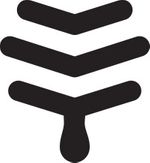It's not uncommon to have a small amount of honey leaking from your frames inside the hive whilst harvesting. This is usually not a problem as the bees will mop up the excess honey even if it reaches the bottom of the hive.
The amount of honey leakage that occurs will depend on the way the bees have capped the cells and also how you set up your hive for harvest.
In most cases the amount of honey that leaks is minimal (1-2 teaspoons), however, there have been a few reports of more significant leakage. To ensure that you do not put your brood at risk, we recommend that you only harvest 1-2 frames at a time for your first harvest. You can then check whether there is any leakage, and if so, what steps you need to take to reduce the impact that this has on your hive.
There are many factors which could contribute to this issue, including partially capped frames, inverted capping and the hive being incorrectly set up for harvesting.
Ensure your Flow Frames are fully capped to reduce the risk of excess honey leaking.
Harvesting Setup:
Ensure that the honey tubes are inserted firmly and correctly with the tongue in the honey-leak-back gap, and that the hive is sloped towards the outlet.
If you have connected the honey tube to a container, ensure that air can escape from the container. In your efforts to make it bee-proof, don’t make it air-tight, otherwise the honey can back up in the tube and spill over the edges of the trough inside the hive.
For Flow Hive Classics, place the corflute Slider (white plastic sheet in the baseboard) in the upper position. This will allow the bees to recycle any spilled honey.
For Flow Hive 2s and Flow Hive 2+, make sure to clean out your acrylic and poly inspection trays, respectively, before harvesting. This will catch any honey spills.
If you do experience leakage with your initial frame we recommend that you check to make sure your remaining frames are all capped and ready to harvest.
Please take a look at this checklist before harvesting honey. If you do have any concerns after you have worked through the harvesting checklist please contact us – we are here to help.




